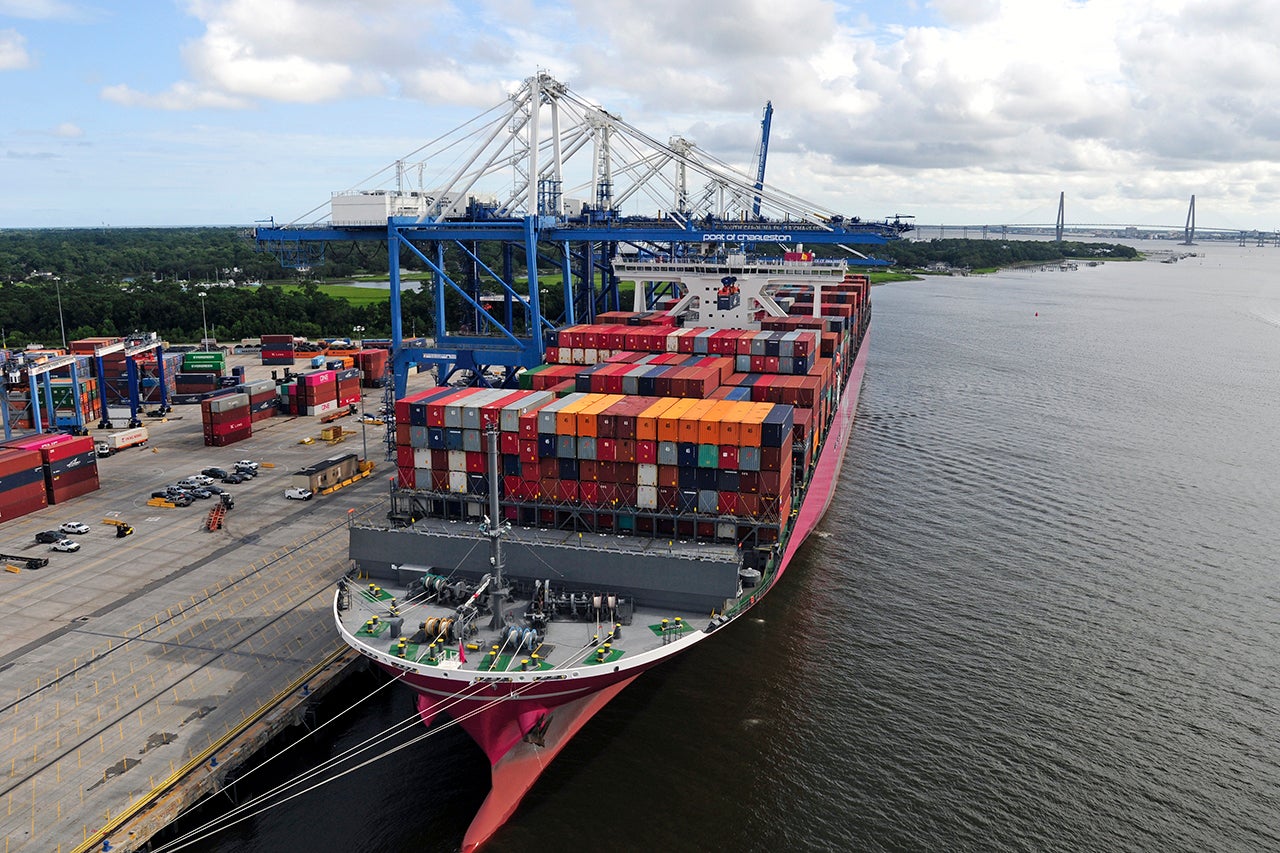Our world is more interconnected than ever, allowing people, goods and services to move easily around the globe. It also allows diseases like the novel coronavirus to spread more easily, too.
In order to stem the latter, we have to halt the former to a large degree. In other words, we have to put the brakes on our supply chain, causing disruption to lives and businesses the likes of which we haven’t seen in generations.
The College Today spoke with Kent Gourdin, the director of the School of Business’ Global Logistics and Transportation Program, about the new normal.
What exactly is the supply chain?
The supply chain encompasses all the end-to-end processes required to satisfy our demand for stuff. For example, one might take home-delivery in Charleston of a washing machine from Lowe’s that was shipped across the country from Los Angeles where it arrived by ship from the manufacturer in Korea. There it was made from steel produced in China using ore mined in Brazil. It’s a very hidden part of our economy, which is really a testament to how well it works since we’re able to take it completely for granted.
The Port of Charleston, the 8th busiest in the nation, is a vital cog in the chain. What’s the impact been like here?
We also have a big manufacturing presence. The BMW plant in Spartanburg is the largest vehicle exporter in the country, and you know they’ve got to be worried about getting the stuff they need to produce their vehicles. But here in Charleston, it’s really about getting the cars out. I was coming over the Ravenel Bridge the other day, and there’s just an ocean of cars down there on the terminal now. It’s just this massive system: if the cars don’t go out and there’s no room for more cars to come down, it then bottles them up at the factory. You take this all the way back, and it just has a tremendous impact on the whole process.
Clearly, people are still a vital cog in the process.
It’s sort of interesting to me in this era of automation and improving productivity through technology, the coronavirus has really made apparent the importance of human labor to the whole process. If these folks can’t get to work to make the products, and people can’t get to work to run the cranes or drive the trucks or whatever, it’s very much a labor issue. The virus’s tendency to spread so easily has made the reaction of its appearance in an organization very dramatic. The port of Houston had a crane operator turned up positive, and they shut down the whole terminal. The port in Shanghai also had to shut down. To really contain the spread, the focus is on the human element in the supply chain.
Is there any way to quantify how much the virus has impacted the supply chain?
I’ve read that ships are sailing around the world with a 10th of their capacity, and clearly, the steamship lines can’t sustain that for very long. And it’s the same way with airlines for that matter. The airport in Dubai is basically shut down, and it’s a tremendous hub for cargo, not to mention people. They’re just stopping all international travel to, from and through. It’s just so pervasive, whether it’s the local economy or international global economy, it really all runs together. These linkages really tie us all together.
We’re really in uncharted waters, aren’t we?
I don’t know that there’s been such a disruption, ever, in our supply chains. I guess the last thing I can think of is maybe World War II. But we were pretty much self-sufficient then. We were sort of cut off from the rest of the world in terms of products, so it wasn’t that big an issue then. Now you can see it doesn’t take very long for a disruption to cause some major headaches.
How long do you think it will take back to normal?
I think it’s going to take some time just because it’s not a system that you sort of flick the switch and turn it off and turn it on. I think it’s going to take a long time, months maybe even a year to get back to normal, get the factories going again, the transportation system generated again, people hired, that kind of thing.
Are there any silver linings to this pandemic?
That’s an interesting question because my first reaction is no. But, it shows how important the human element is to the supply chain, and it just reinforces the importance of that in our supply chains and this wholesale move away from that with technology. I don’t know that we can ever so totally abandon the human element, but this is a good example of what happens when that’s suddenly cut off. As someone who teaches this, it’s fascinating to see what’s going on. We’ll definitely learn some lessons out of all of this. Who knows? Maybe I’ll even be teaching a class about it someday.
Featured image courtesy of the South Carolina Ports Authority.





